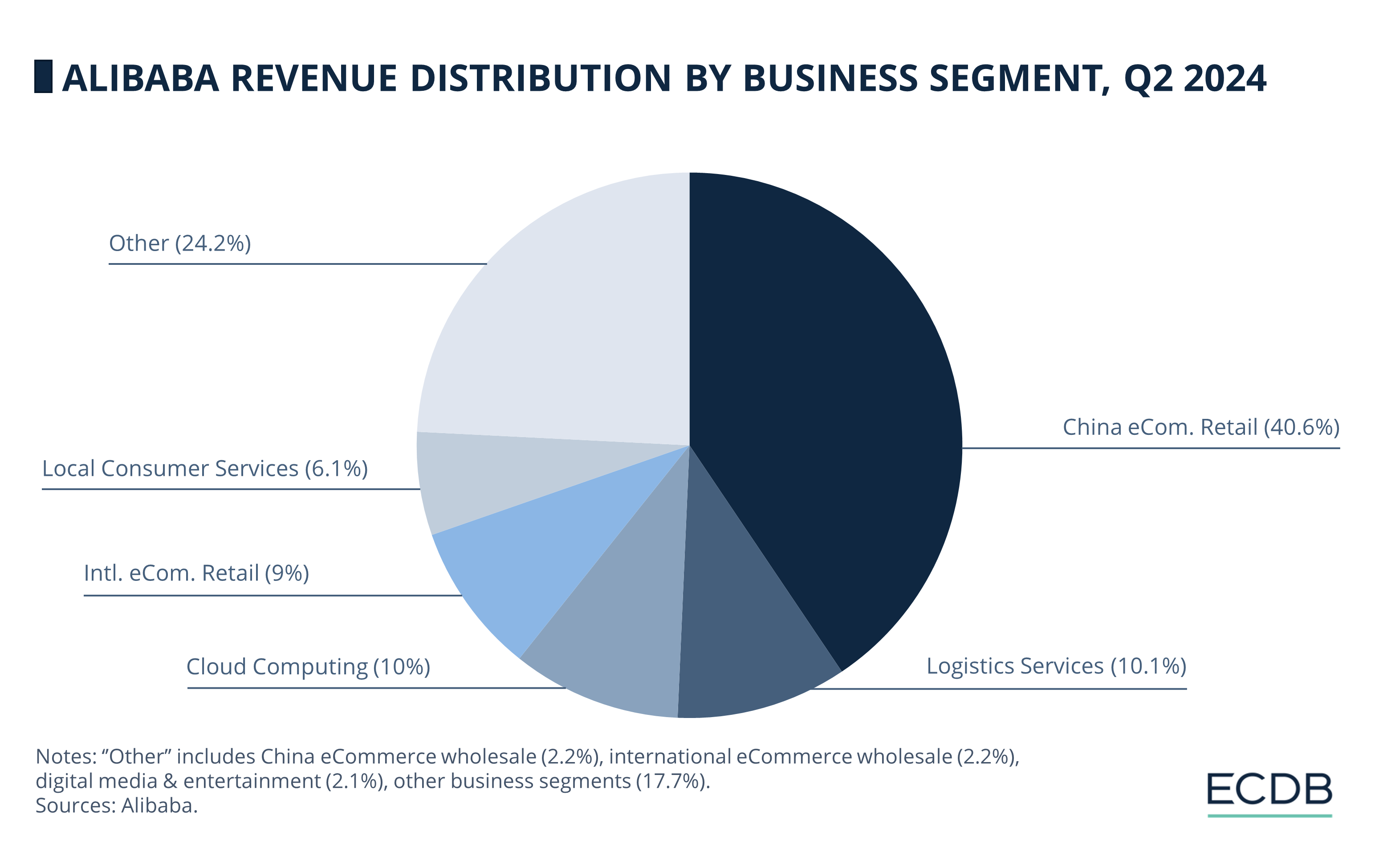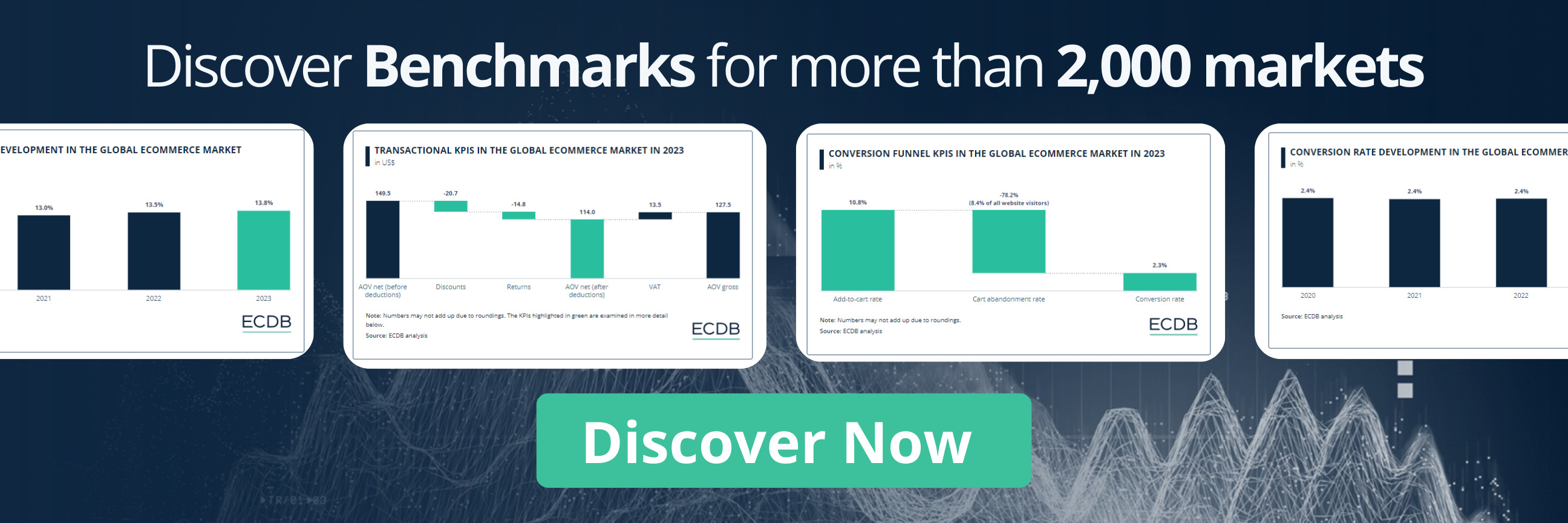eCommerce: Alibaba
Alibaba Expands Global Reach: AI-Powered Sourcing and Supply Chain Diversification
As Chinese retailers face market difficulties, they need to look outward. Alibaba plans to do just that. But how will it do it, and how international is it already?
Article by Cihan Uzunoglu | September 12, 2024Download
Coming soon
Share

Alibaba Expands Global Reach: Key Insights
Global Reach Through Diversification: Alibaba is broadening its global footprint by employing AI-powered sourcing tools and expanding its supplier network to reduce the risks of potential trade barriers in the U.S. and Europe.
Heavy reliance on China: With 40% of its revenue coming from Chinese eCommerce, Alibaba remains highly dependent on its domestic market, while international sales contribute just 9%.
Boost from International Commerce: Driven by its global trade initiatives and focus on supporting small businesses, Alibaba's International Digital Commerce Group achieved a 32% revenue increase, despite looming tariff challenges.
Alibaba is expanding beyond its traditional base in China as geopolitical tensions and economic challenges weigh on its domestic market.
At its Co-Create event in Las Vegas, the company announced new initiatives aimed at diversifying its supply chain and attracting international buyers. This includes a generative artificial intelligence driven sourcing agent designed to simplify global trade, allowing buyers to connect with Alibaba’s 200,000 global suppliers using conversational language and real-time translation.
Expansion Against Trade Barriers
The company’s business-to-business platform, Alibaba.com, continues to see growth internationally, with the United States making up 30-40% of its GMV (gross merchandise volume).
Despite its strong presence in China, where 80% of its suppliers are based, Alibaba is focusing on diversifying its supplier base to counter potential trade barriers in the U.S. and Europe, where new tariffs on Chinese goods are being considered.
40% of Alibaba’s Revenue Comes From eCommerce in China
But how dependent is Alibaba’s business model on international business? The company’s revenue distribution by business segment gives us a good idea:

With 40.6% of Alibaba's revenue, eCommerce retail in China brings in the biggest chunk of money for the company. Logistics services and cloud computing follow at 10% each.
Outside of China, eCommerce brings in only 9% of Alibaba's revenue, while local consumer services contribute 6%.
The remaining quarter of the revenue comes from eCommerce wholesale in China (2.2%) and outside China (2.2%), digital media & entertainment (2.1%), and other business segments (17.7%).
Global Trade Drives Alibaba’s Growth
Alibaba’s International Digital Commerce Group saw a 32% revenue increase year over year, outperforming the company’s overall growth of 4%. The platform’s diversification strategy includes acquiring a German B2B trade platform and promoting Chinese small and medium-sized businesses to engage in global trade. This effort aims to mitigate risks posed by potential tariffs and strengthen Alibaba’s international presence.
Like this insight? It is based on our regularly updated rankings. With our retailer and country rankings, you can learn valuable information about your specific market. Our product category rankings and benchmarks allow you to see where various businesses are currently evolving. This information can aid in your decision-making, whether you are a business developer, shop owner, or CEO of a large eCommerce brand. Stay a step ahead of the market with ECDB.
As global trade continues to digitalize, Alibaba’s new initiatives are part of a broader strategy to lower barriers for small businesses worldwide, enabling them to participate more easily in international trade.
Sources: Yahoo Finance, Alibaba, ECDB

Click here for
more relevant insights from
our partner Mastercard.
Related insights
Deep Dive
eCommerce Payments in China: Alipay, WeChat & Top Payment Methods
eCommerce Payments in China: Alipay, WeChat & Top Payment Methods
Deep Dive
Top eCommerce Companies by Market Cap 2024
Top eCommerce Companies by Market Cap 2024
Deep Dive
Tinaba Partners with Alipay+ to Launch European Super App
Tinaba Partners with Alipay+ to Launch European Super App
Deep Dive
Alibaba Leverages AI and Promotions to Boost Singles' Day Sales
Alibaba Leverages AI and Promotions to Boost Singles' Day Sales
Deep Dive
Alibaba Competitors: Which Companies Are Alibaba’s Biggest eCommerce Rivals?
Alibaba Competitors: Which Companies Are Alibaba’s Biggest eCommerce Rivals?
Back to main topics
